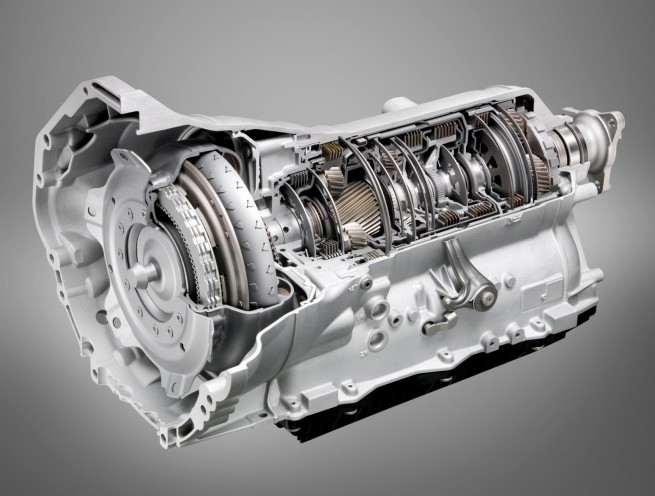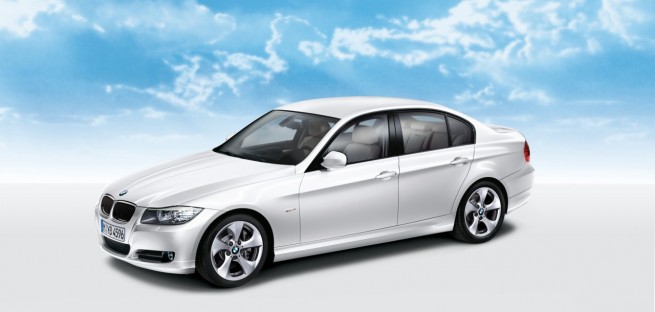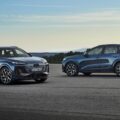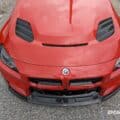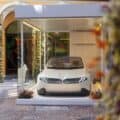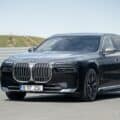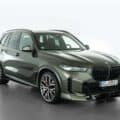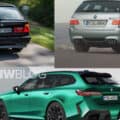At the 2010 Paris Motor Show, BMWBLOG spent some time with Laurent Chauvigne, BMW EfficientDynamics Specialist, to talk about the fuel efficiency within BMW fleet, future products and technologies carrying the stigma of EfficientDynamics, and in general, what EfficientDynamics stands for.
BMWBLOG: Tell us what’s next for BMW in terms of EfficientDynamics.
Laurent Chauvigne: You can see the next step for example in the X3 – the auto start-stop functionality, which was for the first time combined by BMW with the automatic transmission – the eight-speed automatic transmission, and also combined with the 6-cylinder engine. Until now, the auto start-stop function was only fitted on the 4-cylinder engine with manual transmission.
 So we are optimizing the known technologies to use them broader in our product range or to have a better prediction of fuel consumption. Another one is reduced tires resistance – we already have a second generation of such tires, and we are looking with suppliers at new ones. Next, we look at how the chain between fuel tank and wheels, and where goes the energy, where is an energy loss. And we’re looking at all the points of the chain and try to optimize where it makes sense. You can put a lot of money in the optimization of one point, but perhaps you will see it is not so interesting for the consumer. So we’re looking for example at the engine heat which majority of it is lost, but perhaps we can find a solution to reuse the heat for other purposes.
So we are optimizing the known technologies to use them broader in our product range or to have a better prediction of fuel consumption. Another one is reduced tires resistance – we already have a second generation of such tires, and we are looking with suppliers at new ones. Next, we look at how the chain between fuel tank and wheels, and where goes the energy, where is an energy loss. And we’re looking at all the points of the chain and try to optimize where it makes sense. You can put a lot of money in the optimization of one point, but perhaps you will see it is not so interesting for the consumer. So we’re looking for example at the engine heat which majority of it is lost, but perhaps we can find a solution to reuse the heat for other purposes.
BMWBLOG: As far as EfficientDynamics, are the future plans to focus more on fuel efficient diesel-engines or a combination between diesel engines and electric motors?
Laurent Chauvigne: We are looking at all of these. On one side, we try to have the normal emission optimized, diesel and gasoline engines. The second pillar of the EfficientDynamics technologies is the energy brake regeneration, then we have the hybrid and the e-technology on the third pillar, and we also have the hydrogen, which we showed already with the old 7 Series.
So we are working on all these points of view, we want to make the best for the customer – where it makes sense. For example in Europe, which is a big diesel market, we will try to bring optimized diesel engines with EfficientDynamics features because perhaps a hybrid technology together with diesel makes so much sense. In US, on the other hand, there are big gasoline engines. So we are looking at all the technologies, in mobility too, with the MINI E and ActiveE and. We don’t say we want to concentrate only on these points of view, but we are also looking at other possibilities and we place the features that make sense to each country, to each customer.
Eight-speed ZF automatic transmission
BMWBLOG: You mentioned the hydrogen. What’s the status of that project?
Laurent Chauvigne: It’s not totally stopped, like it was mentioned in press articles. We keep thinking about it. The problem with hydrogen is that there are some infrastructure problems and also with the sustainable production of hydrogen where BMW can’t play alone. But we are keeping the technology in line because we have already shown with the old 7 Series that it made sense, we can align dynamic and powerful engines with fewer emissions.
BMWBLOG: There were some concerns at some point with the cooling system...
Laurent Chauvigne: We know about the issues, it was the goal of the old project 7 Series, so we worked on these problems. We know for example that we didn’t make a new hydrogen 7 Series because we wouldn’t have any new information for this project, because most information we get is already with the old one. So we look at what we have done in our job and we know the problems, but the problems with the infrastructure are the biggest ones. BMW can play a role to accelerate this, but we can’t decide alone to build an infrastructure.
BMWBLOG: You have also mentioned start-stop system and brake energy regeneration. What about the KERS system from the Formula 1? Is that KERS system something that will be viable for production cars?
Laurent Chauvigne: At the moment, energy brake regeneration system is absolutely different than in Formula 1. The technology gave us lots of know-how, but you can’t use one to one this technology in this car, because the Formula 1 is a very different thing compared to a consumer car. So you can use the know-how and perhaps some features of the system, but the global system is very different.
The steering wheel as fitted on the BMW Sauber F1.08B with the KERS device
BMWBLOG: What other companies invest the same amount of money for similar efficient cars?
Laurent Chauvigne: I don’t know exactly the figures, but at the moment we’re leaders in the EfficientDynamics. We have more power and better consumption than Audi or Mercedes models. So when you compute the ratio efficiency and dynamics, ours are better.
Alexandru Seremet (BMW Communication): It is also important not to look only at who is the most efficient in terms of fleet, because the fleet can vary a lot. For example, if you have smaller cars in your fleet, it is important to see the balance between emissions and power. There you can really see the performance. From this point of view, we have performance similar to Volkswagen. So we are the best and there are a series of reports that place us as leaders.
Moreover, when you talk about efficiency and sustainability, you don’t look only at the emissions produced when you drive the car, but you need to take into account also the emissions and pollution created while producing the car. And in this regard BMW is the very strong. And BMW is investing a lot in this field, reducing the emissions throughout the whole process, including the production process (moulding, painting without water, etc).
BMW 320d EfficientDynamics
BMWBLOG: What makes that BMW 320d EfficientDynamics so special? Why is it different from the regular 320 diesel?
Laurent Chauvigne: We made the car with energy saver tires from Michelin – second generation of reduced resistance tires, you have the electric power steering, the special clutch – the final drive is longer than the normal one, so you don’t have any vibration of the engine at low-speeds of the engine. And we have special aerodynamics elements that have been optimized – the car is a little bit lower than normal one, so that at the end you have 109 g/km CO2 emissions for BMW 320ed and the normal one has 125 g/km, so a 10-20% optimization – so it’s a big number.
BMWBLOG: Is that the most fuel efficient BMW now?
Laurent Chauvigne: It’s the most efficient BMW and when you see 109 grams/km and 163 hp, it’s a big number. There is also the MINI with the 99 grams, the normal MINI with lots of EfficientDynamics controls in it.
BMWBLOG: Since you mentioned MINI, besides the MINI electric, are there BMW technologies making their way into MINI cars?
Laurent Chauvigne: The same EfficientDynamics features: anti brake regeneration, auto start-stop, and so on.
BMWBLOG: In display here in Paris, you have a BMW Z4 23i with EfficientDynamics label attached to it. What makes it so special?
Laurent Chauvigne: For example in this one you don’t have the auto start-stop functionality because it was a six-cylinder engine, and the first time this combination is used is now in the X3. But energy brake regeneration is in it, electric power steering, reduced resistance tires, special continent control – for example the climate control with a special clutch, so the climate works only when you use it; when you don’t use it it is turned off.
So in all of our cars we have EfficientDynamics features, we only choose what makes sense for each of them, for the consumers. A lot of journalists ask what is the EfficientDynamics with the M models. When you look at the power of the M Models, and you compare it to other carmakers, the efficiency is better with this power. It seems to be high, but for this power, it’s a good value.
BMWBLOG: Is the X3 more fuel efficient than its competitors: Audi Q5 or the Mercedes GLK?
Laurent Chauvigne: We have published the consumption figures for Europe: the X3 35i has a fuel consumption of 8.8 liters/100km. The Audi Q5 for example has higher consumption figures, and with less power. The ratio is really impressive for the X3. Also about the X3, we have the 20d and the 35i, in which we have the same EfficientDynamics features.
BMWBLOG: So in a few words, what is EfficientDynamics?
Laurent Chauvigne: It’s everything. It’s very important not to concentrate only on hybrid technology or a specific technology. We look at the entire chain of energy and we try to optimize at all the points that are making sense. And EfficientDynamics is the reason why we have these wording, because it’s not a terminology, but it’s all a strategy.



